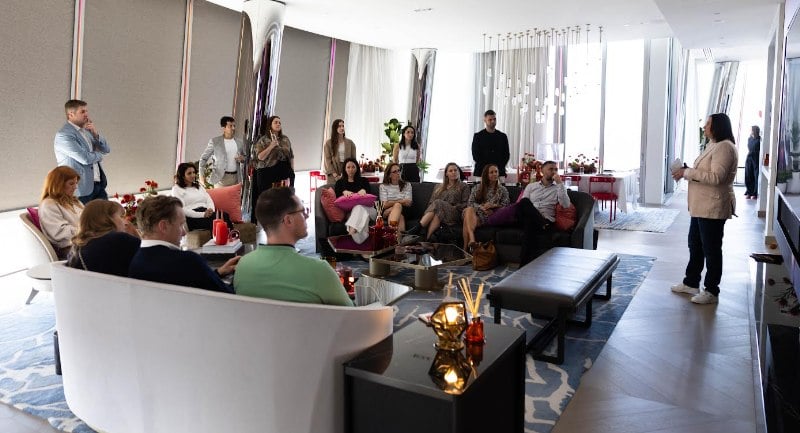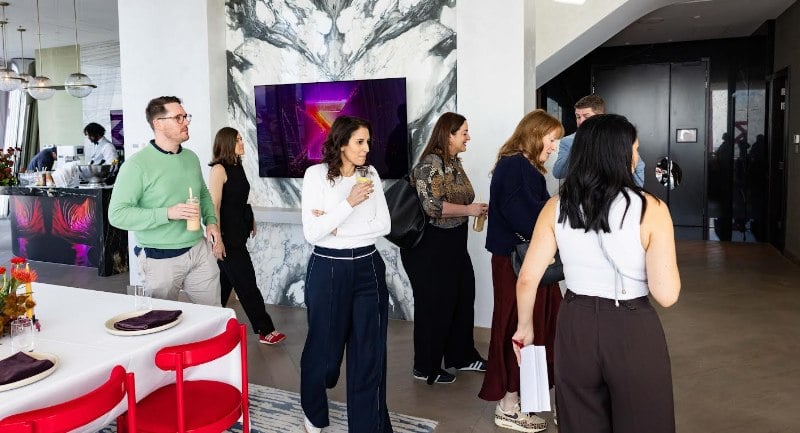Friday October 3, 2025
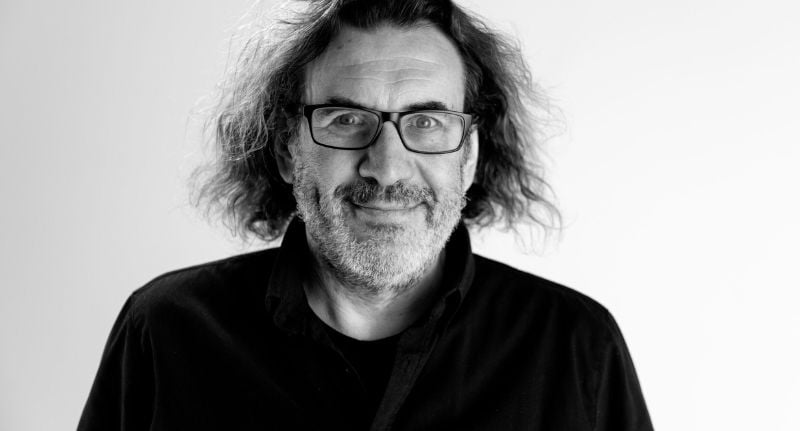
Why Adam Ferrier thinks Trump's Tylenol-autism claims could boost sales
When US President Donald Trump claimed last week that Tylenol (sold locally as Panadol) “causes autism” and told expectant mothers to “tough it out,” marketers braced for fallout.
But according to Thinkerbell co-founder and consumer psychologist Adam Ferrier, the controversy may actually help the brand.
“Saliency tends to trump brand meaning. So people being aware of you seems to be a bigger predictor of success rather than what you stand for,” Ferrier told Mediaweek.
“Tylenol being dragged through the mud won’t have anything to do with sales. If anything, sales will probably increase because more people will be aware.”
Ferrier added that in most PR disasters, as long as the brand isn’t at fault and the claims lack credibility, the sales impact tends to be minimal.
“In the short term… nothing really, it won’t have a significant sales impact. But overall, the complexity of marketing and volatile communications landscapes means that marketers are going to have to coordinate earned media, own media, paid media, and get all those things working together much more deftly than they ever have before,” Ferrier said.
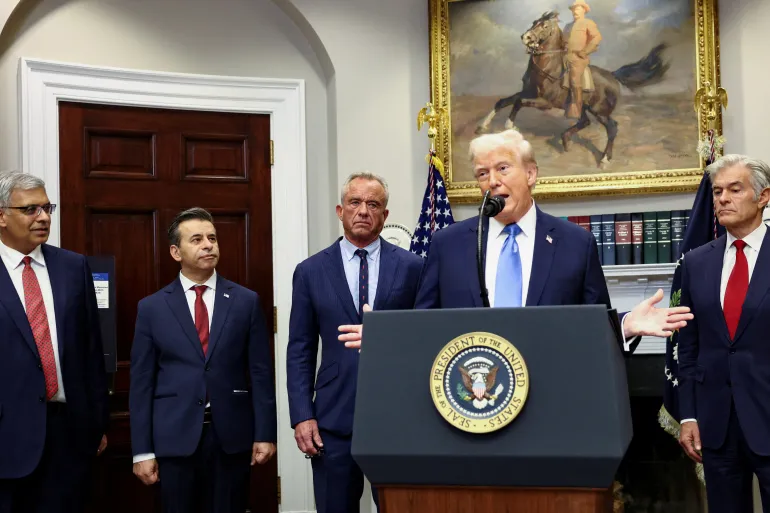
Donald Trump announcing the Tylenol-autism claims
Global review adds intrigue
Against that backdrop, Tylenol parent Kenvue has announced a sweeping global review of its creative and media agencies. The scope spans media, brand and production – covering creative, influencer, healthcare communications, shopper and commerce.
Kenvue said the review aims to “simplify how we work, enhance executional excellence, and better align our partners to support our global growth agenda.” The company spent US$1.6 billion on advertising in 2024, up from US$1.3b the previous year.
Beyond one brand crisis
While the timing has raised eyebrows, the company insists the shake-up is broader than Tylenol. Kenvue manages a global portfolio that includes Listerine, Neutrogena, Aveeno, Band-Aid, Motrin and Johnson’s Baby.
Ferrier says the real test will be long-term brand management. “Corporate reputation and media are going to play an increasingly significant role in marketing, especially when navigating volatile landscapes with unpredictable leaders and external shocks,” he said.
In future agency reviews, he expects coordination between paid, owned, earned and shared media to become critical.
With political noise swirling around Tylenol, Ferrier’s view reframes the crisis: more exposure could lift sales in the short term, while Kenvue’s global review signals the company is already planning for the long game.
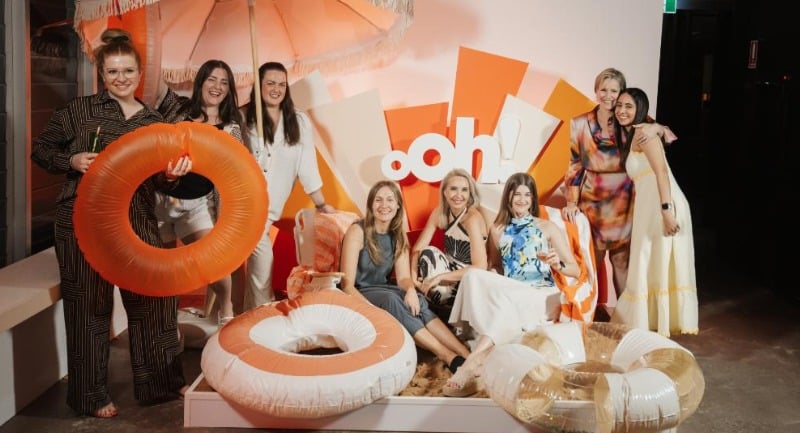
Surfs up as oOh!media launches new ‘Beaches Network’ across coastal Australia
At a lavish event last night at Bondi’s Icebergs Club, oOh!media has launched its new Beaches Network, opening up advertising access across some of Australia’s most popular coastal destinations. The announcement was made at Sydney’s Icebergs Dining Room and Bar, with more than 200 brands, agencies and partners in attendance.
The network spans more than 100 beachside locations including Sydney’s Bondi and Palm Beach, Melbourne’s St Kilda, Glenelg in South Australia, Brisbane’s Suttons, and Perth’s Cottesloe. Designed to capture peak summer foot traffic, the rollout offers brands large-scale reach during one of the most active consumer seasons.
Bondi Beach alone attracts up to 50,000 visitors a day in summer, while Cottesloe draws more than 600,000 visitors annually. With nearly 80 per cent of Australians living within 50 kilometres of the coast, the Beaches Network positions advertisers to connect with consumers in high-energy, social environments.
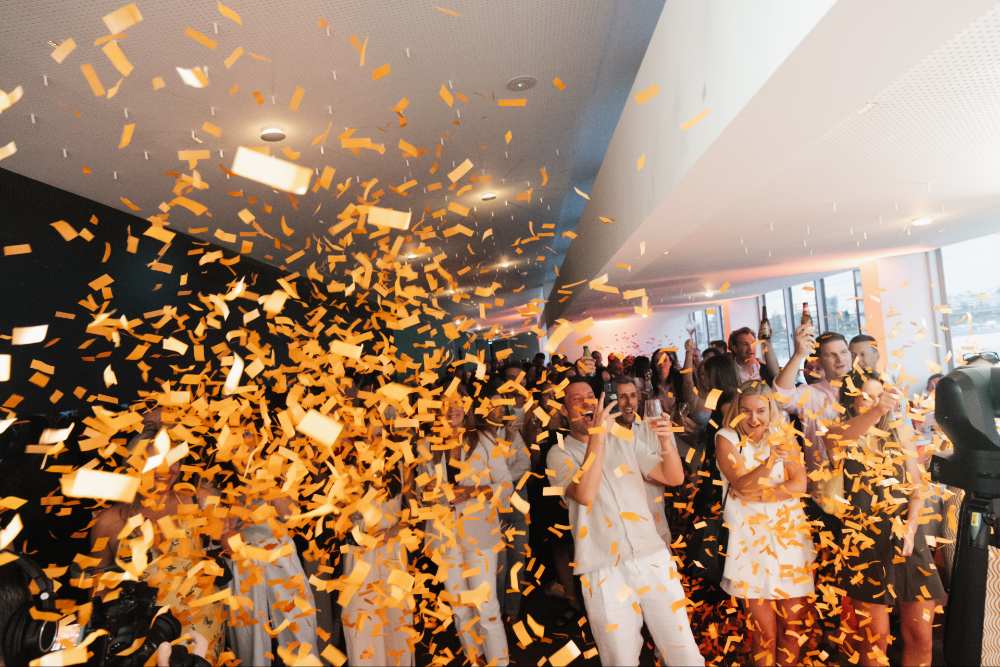
Inside the launch event
“Bondi sets the benchmark for coastal engagement, making it the ideal launchpad for our Beaches Network,” said Mark Fairhurst, chief revenue officer, oOh!media. “With coverage now extending across Sydney’s Waverley Council and the Northern Beaches, we’re unlocking premium access to Australia’s summer economy, when Aussies are out and about, catching up with friends, and spending $166 billion*. With over 800 sites within one kilometre of the coast and more than 2,200 within two kilometres, we’re giving brands unmatched reach to tap into that momentum.”
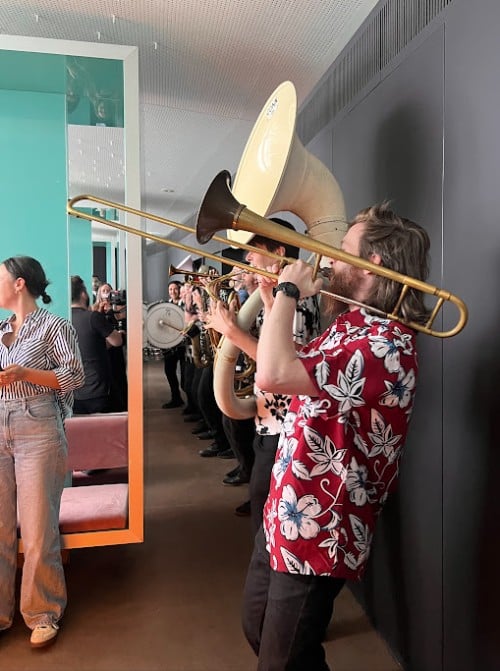
These guys helped oOh! make some noise
In 2024, oOh!media secured two long-term street furniture contracts across Sydney’s coastal suburbs. In Waverley, which covers Bondi, Bronte and Rose Bay, a fully digital rollout is underway featuring sustainable ‘Living Roof’ bus shelters and a new special-build site at Campbell Parade and Hall Street. On the Northern Beaches, oOh!media’s upgraded contract includes Manly Corso and Manly Beach, with digital upgrades at high-traffic sites.
According to Westpac Data X, spending across top coastal destinations increased by $76 million last summer, contributing to Australia’s $166 billion summer economy. oOh!media’s new network aims to give brands greater visibility across these high-value environments.
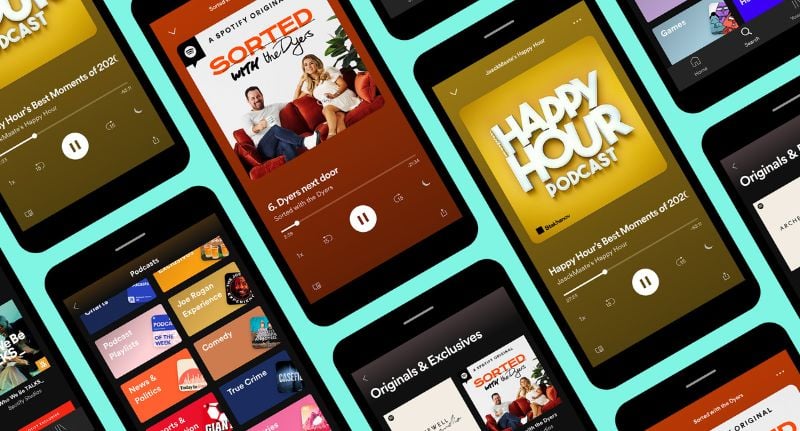
Spotify’s video podcast tools fuel growth for Australian creators
Spotify says its bet on video podcasting is already delivering results in Australia, with consumption hours nearly doubling year-on-year.
At the heart of that growth, according to Prithi Dey, Head of Podcasts AUNZ at Spotify, is a sharpened focus on creators.
“I’ve been at Spotify for six years, and we’ve had video on Spotify since 2019 I think when we brought Joe Rogan on. So we’ve actually had video as a product on Spotify for a long time,” Dey told Mediaweek. “But the video product was never as robust as it is now.”
“In the last two to three years, we’ve really changed our strategy globally because we want to be a creator platform. We want to be here to support creators, whether they’re audio only or podcasters or video creators, and we want to give audiences the best possible experience when they’re on platform,” she said.
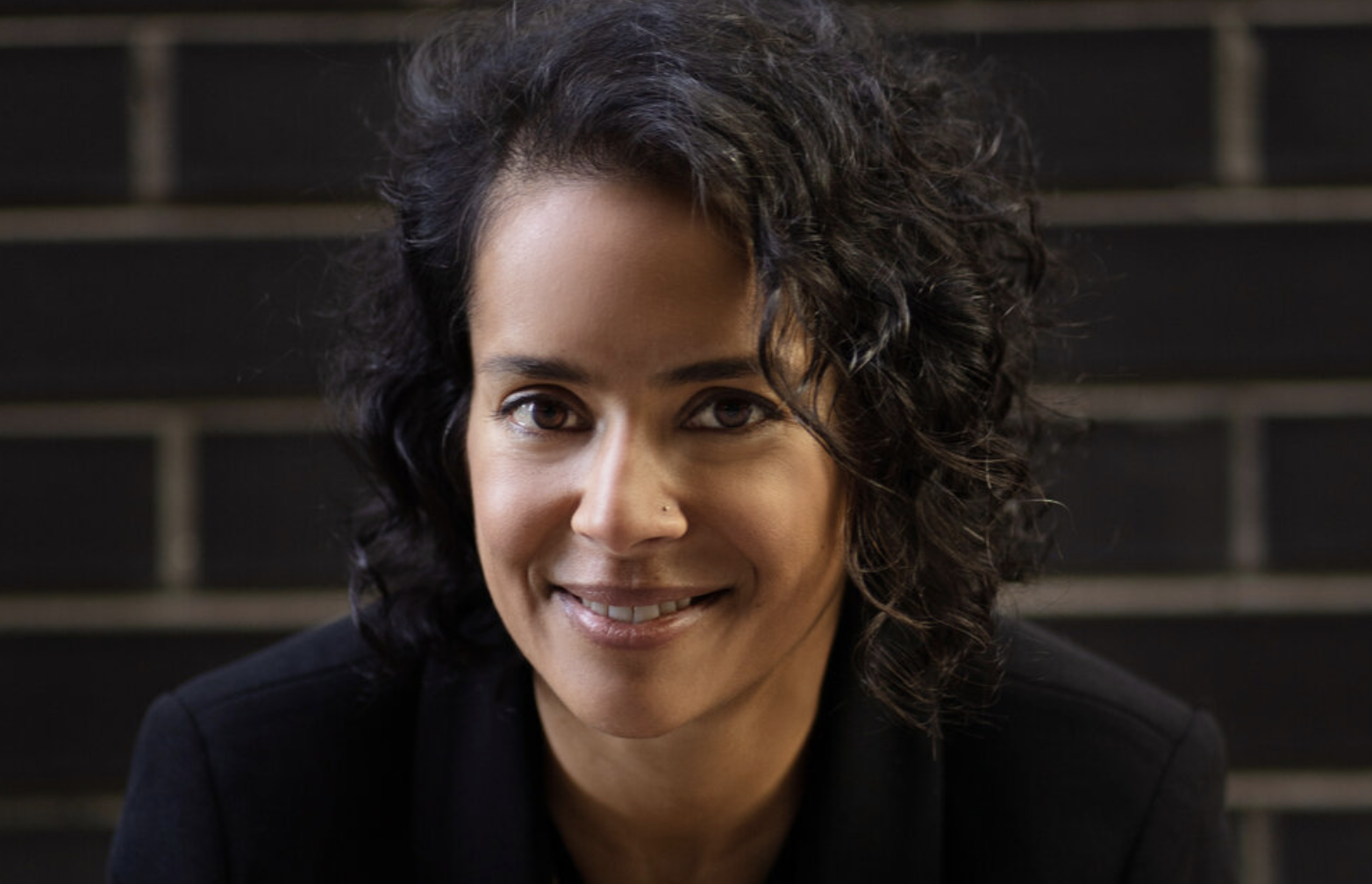
Prithi Dey, Head of Podcasts AUNZ at Spotify
Refocusing the platform
Dey said the shift was an intentional pivot after a period of experimentation. “I think it was internal – the internal need, or the recognition that we need to be more focused as a platform.
“During COVID we launched our platform Live because we were trying to monetise content,” Dey explained.
“We obviously had a big slate of original and exclusive shows, we also music and talk, and we had all these different formats. That’s when we went, hang on a minute, we’re trying to do a lot, instead, let’s really fine-tune and think about what is at our core – the creators and the audience.”
She added that this renewed direction has made the current period her “most favourite era” at Spotify. “It’s putting the power back in the hands of the creators, which is really exciting and empowering for them, but still giving audiences a really great experience.”

Australian market shows strong uptake
New data released to Mediaweek positions Australia as the sixth-largest market for video podcast consumption globally. Hours streamed are up 91.5% year-on-year, while monthly listeners have increased by 66.3%.
The share of creators publishing video podcasts has risen 43%, while the number of listeners watching video has grown by almost 69%. Comedy, business and technology, and news are the most popular categories, alongside true crime.
According to Dey, these trends reflect the local appetite for a blend of global and homegrown content.
“The consumption behaviour of Australians is a mixture of local content and import content. Australians love US content and UK content, which doesn’t surprise me at all. But Australians are very proud as well, and we definitely want to champion and hero local talent and local moments.
“So when we program content on Spotify, we try and make sure it’s a really good blend of import content but also local voices from different backgrounds and genres. Having that balance is definitely giving Australians what they want and need,” Dey said.
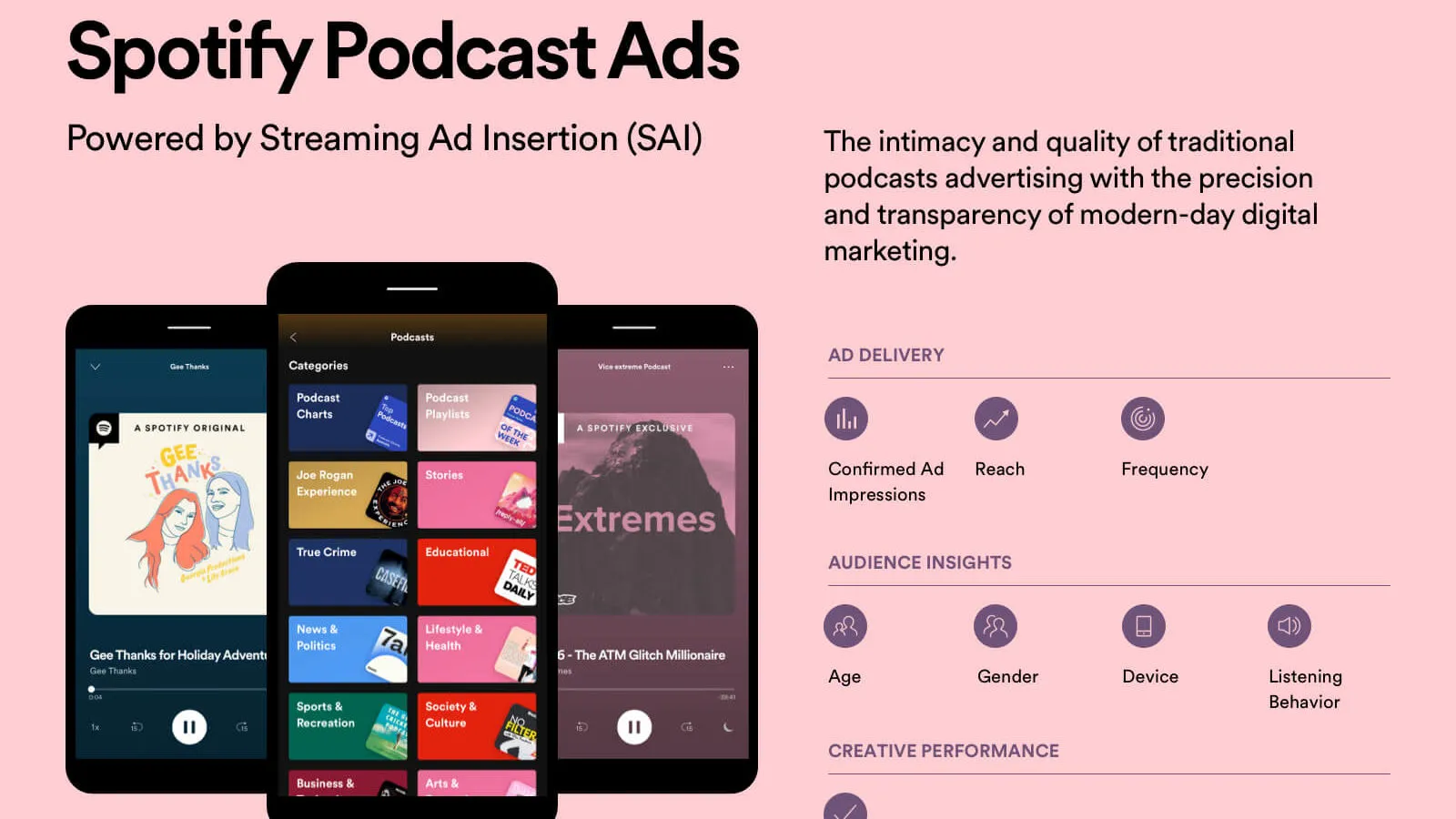
Creators seeing tangible results
Independent podcasters are among the biggest beneficiaries. Spotify says Alexis (Do You F*** Mind*), The Relatables, and Bella Fiori’s Mystery Mondays have seen meaningful lifts in both consumption and monetisation.
Internal data shows Mystery Mondays recorded a 40% month-on-month increase in consumption in June, alongside a 45% lift in revenue. The show also topped true crime charts in the US, UK and Australia.
A data-led approach
Dey emphasised that Spotify’s programming decisions are underpinned by analytics. “We have access to so much data. We are constantly, on a global level, looking and reviewing how people are consuming audio and video – how long they’re consuming it, and where they’re consuming it.
“Then locally as well, we spend a lot of time looking at show-level data, audience behaviours, demographics and so on, because it’s really important that we are very familiar with that audience. We need to understand our audience so we can program content and ensure we’re getting the best content in front of them.”
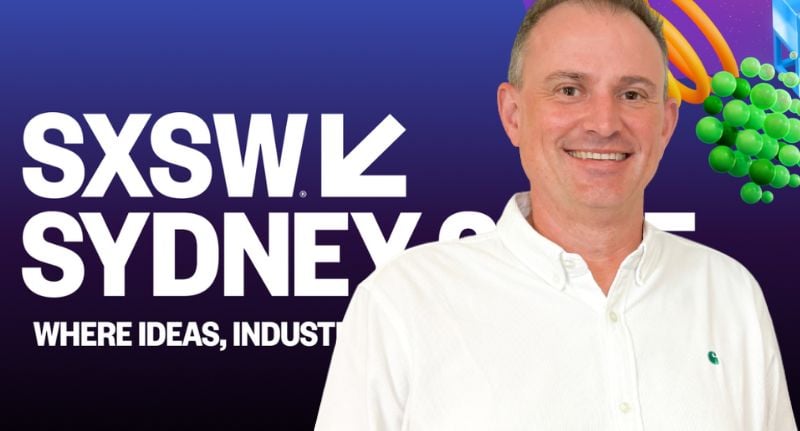
SXSW boss Simon Cahill on turning a lifelong hobby into his dream job
For Simon Cahill, the intersection of music and technology has never just been work – it’s been a lifelong obsession.
From tinkering with VCRs as a kid to helping launch SXSW Sydney, he’s built a career that reflects the same passions that once kept him glued to Saturday morning music shows.
“I’ve come from a history of music and technology, and those two things are an intersection,” Cahill explained to Mediaweek’s Newsmakers.
“As a young kid, my parents owned a TV and video repair business. So on Saturday mornings I would sit there as my dad would be soldering together the first VCRs, whilst I’d be watching music shows and being obsessed with music and technology.”
From festivals to record labels
That early fascination quickly spilled into his professional life.
In the 1990s, Cahill was immersed in Brisbane’s music scene, working at festivals like Livid while promoting and managing dance parties with acts such as Fatboy Slim and Sasha & Digweed. By 2000, he had moved to Sydney, taking on A&R at Sony Music.
“Discovering culture and getting it to audience, right? Connecting that culture and audience piece,” he said.
At Warner Music Group, Cahill became senior vice president of commercial media and audience, where he spotted early shifts in discovery.
“My job there was to bring together the technology piece that no one else in the business was gonna dive hands into, so social media and streaming. It was very much at a time where these pieces were new, not fully understood, but we could see what was happening.”

TEG Appoints Simon Cahill & Jono Whyman As New Heads Of SXSW Sydney
SXSW Sydney and full-circle moments
That path ultimately brought him to SXSW Sydney, where he now serves as co-managing director alongside Jonny Wyman. The role, he says, brings together everything that has driven him since childhood.
“For me, who always wanted to be closer to technology, this is a dream job. The room is filled with over a thousand speakers who are talking about what’s next in all of their fields. That’s what I think is truly special about the event,” said Cahill.
Now, he’s helping cement SXSW Sydney as one of NSW’s “foundation events” alongside Vivid and Mardi Gras – and, in the process, has turned his hobby into a career-defining role.
For the full conversation with Cahill – including how he sees podcasting, creators and the next wave of media – check out Mediaweek’s Newsmakers.

From Pikachu going to war to Wednesday Addams lunching with the Family Guy, OpenAI's generative AI video platform Sora is a copyright nightmare
In mid-September representatives from OpenAI met with Hollywood studios to let them know about the launch of Sora. The generative AI video app launched on Wednesday, enabling users to create short-form videos based on text prompts.
The Sora launch was notable in that not only is the video generation capability impressive, but it now also provides synchronised sound. It has also proven to be a nightmare for the protection of IP.
When Sora launched, OpenAI promised that copyright characters would be removed if IP-holders filed an opt-out request. It also said that Sora wouldn’t generate images of recognisable public figures without their permission. This means that you couldn’t create a video of Donald Trump defying his bone spurs with a foot race against Julia Gillard, for example. But you could have Homer Simpson in a foot race against Jessica Rabbit, or at least you could until a copyright opt-out request was filed.
As reported by the Wall Street Journal, companies with characters at risk of copyright violation were unable to file a “blanket opt-out across all of an artist or studio’s work.” Instead, IP-owners would have to report violations on a character-by-character basis.
Within 48 hours of the launch of Sora, the Internet has gone wild with all sorts of experimentations to see what users could get away with.
Popular entertainment podcaster Matt Belloni posted to Bluesky some of the copyright infringements he was able to generate. This video of Cartman from South Park is impressive in that it completely captures the animation style and voice work from the show:
Sora 2’s response to “South Park’s Cartman doing the “you can’t handle the truth” monologue from A Few Good Men.”
— Matt Belloni (@mattbelloni.bsky.social) 2 October 2025 at 14:06
But, the video that is genuinely shocking was this mashing of the Wednesday Addams character from Netflix’s TV show Wednesday, played by actress Jenna Ortega, and Peter Griffin from Family Guy:
No big deal, I’m just making personalized videos on Sora with my favorite copyrighted characters owned by Disney and Amazon/Netflix and featuring an identifiable actress who is definitely not getting paid for this….
— Matt Belloni (@mattbelloni.bsky.social) 2 October 2025 at 07:33
There were videos of Pikachu storming the beaches at Normandy:
My favorite new trend in the Sora app is putting Pikachu in every movie.
This is “Saving Private Pikachu” 👇 pic.twitter.com/pV8JYUb9SZ
— Justine Moore (@venturetwins) October 1, 2025
The best James Bond (Sean Connery, of course), playing poker against OpenAI’s Sam Altman:
Sora 2 Test: Operation Thunderballz
( James Bond vs @sama ) pic.twitter.com/yW5MzmEQus
— Benjamin De Kraker (@BenjaminDEKR) September 30, 2025
It isn’t clear whether a fake toy commercial for Epstein Island contravenes the spirit of preventing public identity generation.
Sora 2 Epstein Island toy ad
— LOWρUFO 🐁🇵🇦🇬🇱🇨🇦🇲🇽 (@lowrhoufo.bsky.social) October 2, 2025 at 8:37 PM
It isn’t a complete free-for-all, with quite a number of characters already not available for use. For example, Forbes writer Paul Tassi has reported that he was unable to make videos of Superman driving a golf kart or have Elsa from Frozen playing basketball. This suggests that IP opt-outs have already been placed for a number of Disney and Warner Bros characters. No doubt opt-out requests will be made for more characters in the coming days.
But, for the moment, on Sora it’s the wild west out there for anyone with a desire for mischief.
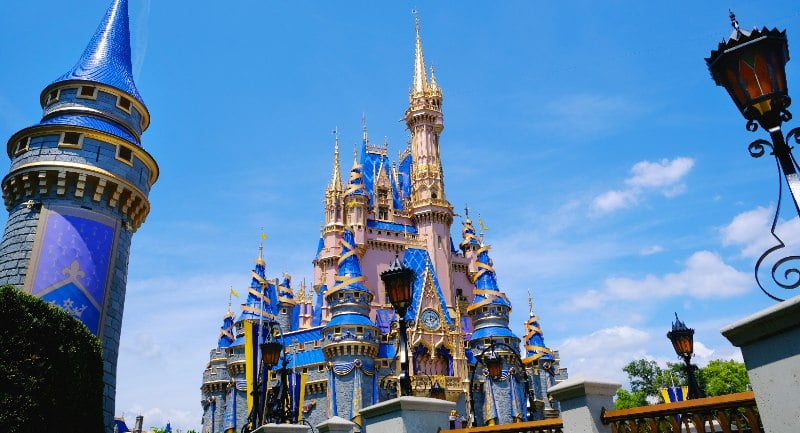
What theme parks teach us about designing for experience
Written by Trent Weekes, Senior Producer at Opus Agency
When I was 11, my parents took me to Disneyland. I was beyond excited and it did not disappoint.
Even today, I can still remember everything about that trip – how it felt to walk down Main Street, the hum of excitement, the thrill of the rides and the feeling there was another wondrous thing waiting around the next corner.
That trip sparked a lifelong love of and fascination with theme parks that’s stayed with me ever since.
But what’s kept drawing me back over all these years isn’t just the rides, no matter how much 11-year-old Trent loved them – it’s the way theme parks strip away the everyday and reconnect us with our sense of childhood wonder.
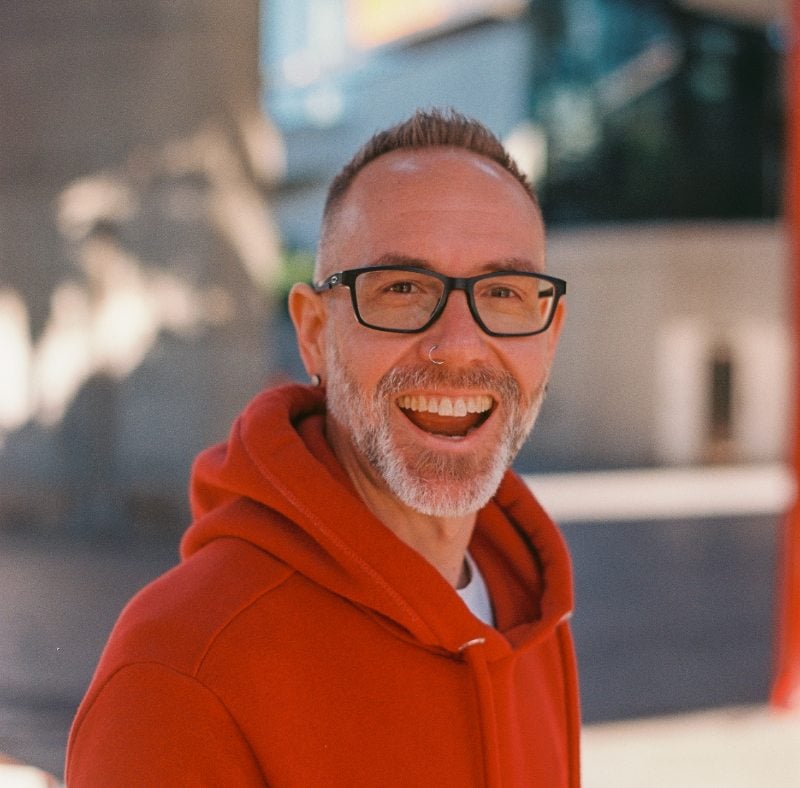
Trent Weekes
As marketers and event producers, we often hammer that wonder out of our work in the pursuit of efficiency, clarity and ROI. Yet whether we’re creating consumer activations or business conferences, our audiences are still people – and people want to feel something real.
That’s where I believe theme parks can teach us a powerful lesson: how to design experiences that don’t just communicate, but truly connect.
We know that in both consumer and B2B contexts, audiences respond better to experiences that are immersive, emotionally engaging and thoughtfully designed. Just as a park visitor steps into a fully-realised world, attendees at a conference or activation notice the details, the flow and sense of narrative.
The difference is (and I’m sure we’d all agree) – theme parks are at the forefront of it.
That’s why I think we have a lot to learn from them. By examining how theme parks strategically craft every detail to engage, surprise and involve their audience, marketers and event producers alike can build brand experiences that don’t just entertain but leave a lasting impression.
Worldbuilding for a competitive edge
Since the early ‘90s, one global trend has continued to deliver a competitive edge for theme parks: worldbuilding.
Walt Disney pioneered the concept in 1955 with Disneyland. Universal Studios has more recently taken on the mantle and become a leader in worldbuilding – The Wizarding World of Harry Potter being a prime example. It set a new standard in experiential storytelling and sensory integration, engaging all five senses in order to build the full experience.
As impressive as it is, The Wizarding World of Harry Potter is just one part of Universal’s Epic Universe Orlando, which comprises different lands built around a central hub and accessed through their own themed portals. These portals are visually and spatially designed to block sightlines so you’re fully immersed in your self-contained universe, experiencing its weather, lighting, soundscape and story logic.
What we can learn from this theme park is that building a world that truly resonates with audiences requires more than visual spectacle: it demands a deep understanding of the IP, a commitment to authenticity, narrative consistency and a willingness to take creative risks.
This is our cue to move beyond the surface of event design and consider the deeper, layered experience we’re offering our audience. Theme parks are a reminder that more signage isn’t always better wayfinding and more content doesn’t necessarily create more engagement.
Instead, we should be asking ourselves: Are we designing environments that spark curiosity, guide intuitive exploration and reflect the true personality of the brand, in the same way IP defines the personality of a themed land?
We’ve already seen ripples of this in our industry. Events like the Salesforce World Tour show how principles of world-building can be applied to great effect – where the environment itself becomes a form of storytelling, drawing people in visually, guiding behaviour organically and encouraging deeper engagement.
Movement matters when it comes to immersion
Something marketers and event producers shouldn’t overlook is the importance of movement – this is tied directly to building meaningful guest interactions and can create a sense of kinetic immersion.
Take Super Nintendo World, another land within the Epic Universe park, as an example. The entire land is constantly moving – coins spin, blocks bounce and guests wear Power-Up Bands to interact physically with the environment. You’re not passively observing; you’re part of the land and can affect the environment just like Mario in the game.

Super Nintendo World
A local example of this is Dreamworld’s recent addition, Rivertown, which has also embedded movement into the landscape. Through its roller coasters, the area feels alive, dynamic, and interconnected – a clear example of how layered motion supports the world’s believability.
In events, kinetic design doesn’t need to mean rollercoasters or giant animatronics. It can be as simple as layered lighting, dynamic stage transitions or activations that respond to audience participation.
The point is to design spaces that feel alive, where audiences aren’t just observers but co-creators of the moment.
After all, movement, when done right, is a shortcut to memorability.
Building brand affection through more focused experiences
In 2023, Universal Destinations & Experiences announced a suite of new projects as part of its new ‘feeder attraction’ strategy.
The first is Universal Kids Resort in Frisco, Texas. The resort will be smaller in scale and lighter in technical complexity compared to Universal’s sprawling flagship parks – meaning significantly lower investment.
It will function as an introduction point, opening the brand to a fast-growing regional market currently underserved by the theme park industry. With strategic tailoring to a specific demographic, the goal is clear: to build brand affinity at a young age, and when those families eventually travel, Universal will be top of mind.

Universal Kids Resort map
We can borrow from Universal’s strategy when designing our own event ecosystems.
Rather than relying solely on large-scale campaigns, we can create intimate, localised or digital activations that act as invitations into something bigger. We should instead design experiences that draw together local, regional and global moments in a cohesive journey.
That may mean building demand by meeting our audiences where they are – through strategic previews that guide them toward the full-scale experience or feeder events that extend the impact of larger events by creating a sense of narrative continuity.
You don’t always need a blockbuster moment to make an impact. It’s about designing an ecosystem, not just a one-off.
Nurturing the inner child
One of the most remarkable qualities of theme parks is their ability to connect with and nurture our inner child.
But theme parks are more than just escapism for time-poor adults who spend hours in front of screens – it’s a strategy for deeper connection.
Rather than contributing to the noise, we as event producers have an opportunity to create spaces of stillness, surprise and sensory engagement, where audiences are not just reached, but felt.
Perhaps the question we should ask our clients isn’t just what they want to say, but who they are – and who they were before the world told them to grow up.
By thinking about what an organisation’s “inner child” would be – its essence, play, and purpose – we can craft experiences that don’t just communicate a message, and instead invite their audiences to feel something real.
For marketers, the lesson is simple: don’t just communicate – immerse. Whether it’s through layered storytelling, kinetic energy or thoughtfully scaled experiences, the brands that stand out will be the ones that create worlds people want to step into, feel and remember.
By borrowing from the art of theme park design, we can craft moments that leave a lasting impact – leaving audiences not just entertained, but truly moved.
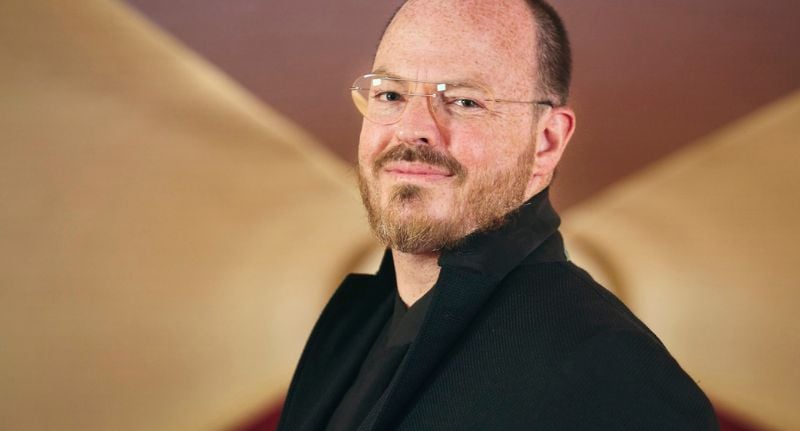
Why futurist Jonathan Brill says humans can shape AI to work for us
When COVID-19 sent shockwaves through global markets, futurist Jonathan Brill says it was the companies that had prioritised resilience over performance that came out ahead.
As HP faced a hostile takeover from Xerox in 2020, he recalls, “investors thought it was a good idea, analysts thought it was a good idea – and then something surprising happened.”
Speaking with Mediaweek, Brill who now works as a motivational speaker with The Champions Speakers Agency, argued that the pandemic exposed just how critical flexibility and foresight have become for business survival.
“When COVID hit, Xerox’s earnings per share dropped 69% and then they stayed there, whereas HP’s went through the roof,” he said.
“It was a result of very small changes – things that the investors and analysts hadn’t noticed – that increased HP’s flexibility when the world changed, increased its resilience, and its ability to perform.”
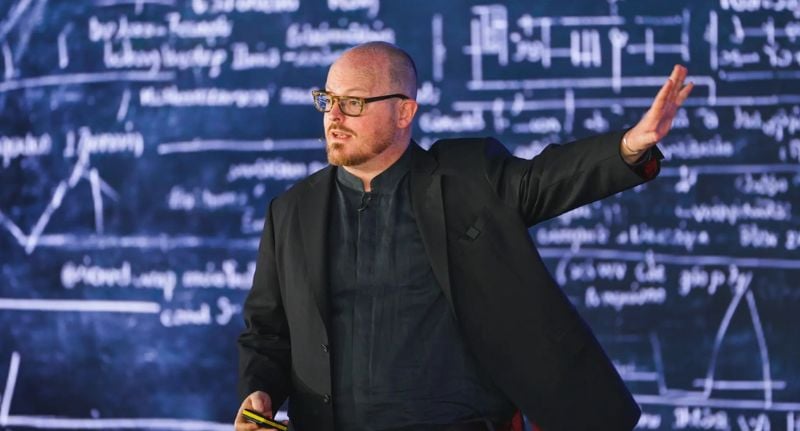
Futurist Jonathan Brill
Lessons from HP in a time of crisis
Brill pointed to his experience at HP during the early days of COVID as a defining example of how resilience can change the trajectory of a business.
At the time, Xerox was mounting a hostile takeover. “Investors thought it was a good idea, analysts thought it was a good idea, and then something surprising happened,” he recalled.
“When COVID hit, Xerox’s earnings per share dropped 69% and then they stayed there, whereas HP’s went through the roof.
“It was a result of very small changes – things that the investors and analysts hadn’t noticed – that increased HP’s flexibility when the world changed, increased its resilience, and its ability to perform,” he said.
Brill said this moment underscored a wider truth: “It turns out that companies that prioritise resilience over performance have dramatically better outcomes over time. In fact, according to a recent transnational cross-sectoral 13-year study by McKinsey, they have about 81–82% higher economic profits over time.”
Turning crisis into advantage
For Brill, disruption is not something to fear but to harness. “In Chinese, the word for crisis is ‘wei ji’: wei means danger, ji means opportunity. Crisis is both danger and opportunity. I think the question isn’t what happens next, the question is whether you’re prepared for anything that could happen next,” he said.
The real opportunity, he stressed, lies in proactivity: “You don’t need to accept the future that’s given to you – you can architect your own future. That’s what’s so exciting about understanding these trends, understanding how everything comes together.”

Artificial intelligence and the workforce
Unsurprisingly, artificial intelligence looms large in Brill’s outlook. He believes the technology will reshape economies and societies much faster than many expect.
“What excites me about AI is that it’s going to shift the entire economics of the world. We’re able to automate those things that we used to not want to do, and it’s going to happen quickly,” he said.
Brill also pushed back on narrow views of AI as a job-cutting tool. “Foundationally, it’s about this idea that we’re going to become more efficient – by which I mean that we might have to lose some jobs,” he explained.
But he argued that businesses need to consider AI at three levels: “tasks – the things we do over the course of the day; how those bundle into processes and jobs that we do in our businesses; and how the people who do those jobs create resilience when edge cases occur.”
The bigger picture, he said, is about resilience, and using AI to our advantage by helping to automate mundane tasks. “Because if we do those things, we can all be dramatically more efficient, and we can live in a much, much better world,” he said.
Creating “strategic luck”
Ultimately, Brill wants leaders to walk away from his talks with a toolkit for shaping their own futures. He calls this idea “strategic luck.”
“We talk about the future – the range of things that could be. We talk about the skills that you need to take advantage of it. But most of all, and most importantly, we talk about how to create a culture of what I call ‘strategic luck’: one where the future doesn’t happen to you by accident, but one where it rolls itself out to your advantage,” he said.
The key, he argued, lies not in sweeping transformations but in simple, deliberate actions. “If you do small, simple things in your business, in your life, in your community, you can have dramatically better results, far more consistently, and best of all, with dramatically less effort.”
Main image: Futurist Jonathan Brill
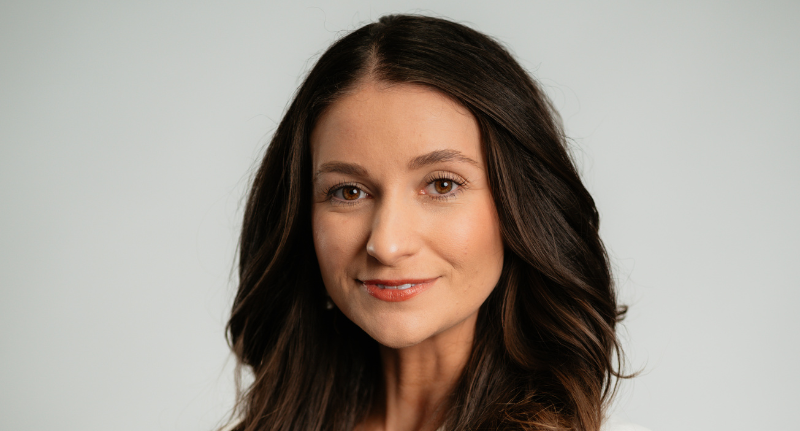
IMAA Spotlight: Veronica Cremen from Vonnimedia wants brands to see social as a growth engine, not a channel
Mediaweek has teamed up with the IMAA to give its indie leaders a platform to talk about their work, thoughts about the industry and their interests outside of their working life.
Veronica Cremen was 24 when she set up Vonnimedia in the lounge of her home. Now, as the Marketing Operations Director of the social-led marketing agency, she brings media buying, strategy and creative together. Vonnimedia joined the IMMA back in 2021.
What sparked your interest in launching your own indie agency?
I believed social was being underestimated. Too many agencies treated it as a channel, not a growth engine.
As a practitioner I fell in love with what doing Social (particularly paid, and increasingly now organic) could do for businesses (ask anyone who’s been to dinner with me, they’ll back this up), and I couldn’t stop telling everyone about it and people then started to ask me for help!
One thing led to another and we had too many clients for me to handle on my own, so next thing I looked up and we had created a thing called an Agency!
What sets your agency apart from others?
We position ourselves as the social-led marketing leader in the Independent Agency space.
That means:
– Producing social-led creative that feels elevated and culturally relevant.
– Content optimisation and adaptation execution designed for sustained growth ~(60% small tweaks to existing best performers, 30% refreshed executions of the winning messages, 10% bold new ideas).
– Paid media strategies designed for today’s platforms (Meta, TikTok, Google, Amazon, Pinterest).
– Creative analytics reporting that are digestible, visual and eliminate information overload.
– A transparency-first approach, where clients know exactly what’s driving results, and we push the boundaries strategically of what is possible for a brand.
We’re not just running ads – we’re helping brands unlock the true growth potential of social while aligning, and amplifying their broader marketing system.
We pride ourselves on an “In house mentality with Agency level execution”. We take a focus on business growth, not just media strategy (which has come from our time working with some of the hyperscaling brands in Australia).
How many Agencies can say they have access to the P&L and balance sheets of more than 70% of our clients?
Indie agencies are increasingly seeing success with major pitches. What differentiates your pitch approach from that of larger agencies?
We cut the jargon. Our approach is straightforward: real insights, clear numbers, and creative ideas that can be actioned tomorrow.
Larger agencies often lead with scale; we lead with clarity and precision. Clients tell us they value that they walk away from our pitch not just inspired, but equipped.
We’re seeing Media becoming less and less about the buying power benefits, particularly as we move to more access to great inventory – which means that clients are really looking for strategic advisors.
Working with Indies, you get that mix right – where clients get access to senior professionals and get the expert support they need.
I also think clients love our energy, we want them to win – so the incentives feel much more aligned.
Who are your latest agency account wins?
Recent wins include preferred social partner for Schwarzkopf Professional ANZ, and a growing roster of consumer brands across fashion, beauty, and lifestyle, such as Deja Marc and JAYD Swimwear.
What’s a piece of work you’re most proud of?
Our recent Australian Fashion Week with Schwarzkopf Professional was a recent highlight.
It united paid social, organic creative, and content optimisation in a way that not only drove results, but elevated the brand’s perception in a highly competitive space.
For us, that’s the benchmark, campaigns that win commercially and creatively, that create behaviour shift and a new, improved level of brand experience.
As a leader, how do you switch off from work and unwind after a busy week?
I find inspiration outside of advertising – coffee at a local cafe, time with friends, going for walks and working out, creating content, cooking or discovering new creators online. Creativity outside of work always comes back into the work.
What does success look like for you over the next 12 months?
Scaling Vonnimedia into Australia’s most empowering marketing agency – one that clients trust to drive growth, and a place where our team feels energised by the work.
Success is being recognised as the go-to indie for eCommerce and consumer brands who see social as their growth engine.
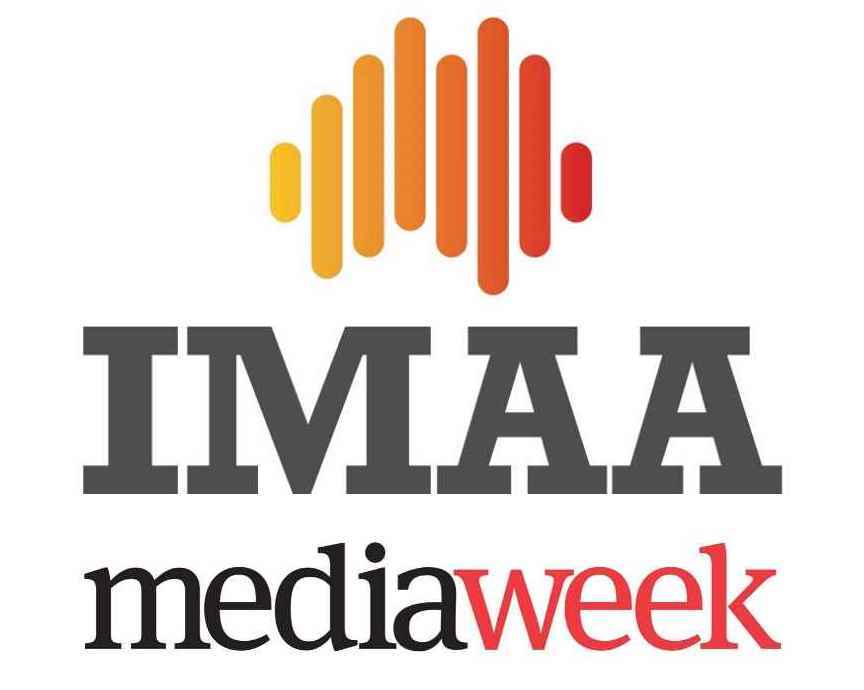
See here for past editions of IMAA Spotlight.
Top image: Veronica Cremen
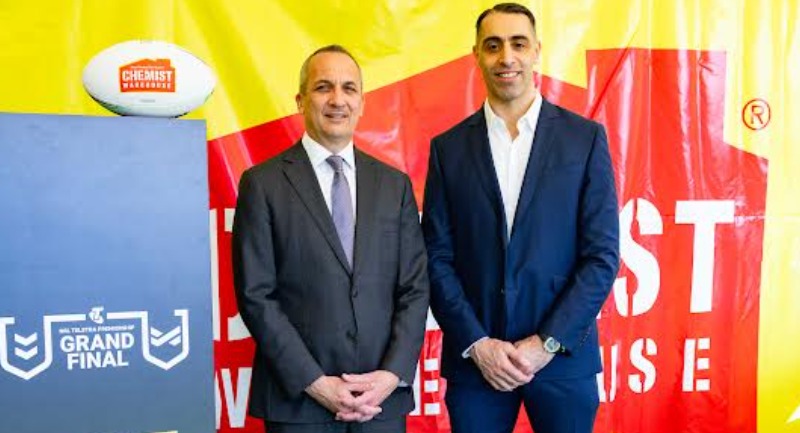
Chemist Warehouse extends NRL partnership through to 2029
Chemist Warehouse has extended its long-running partnership with the National Rugby League (NRL), continuing as the Official Pharmacy Partner across the men’s and women’s premierships and representative events through to the end of the 2029 season.
The agreement, which began in 2018, now stretches into a second decade, with the retailer aligning its brand with rugby league’s performance, community and wellness values. The partnership covers major competitions as well as grassroots initiatives, ensuring national visibility across the sport.
As part of the renewed deal, fans will see the return of activations including the NRL Fan Zone, interactive experiences, exclusive offers and meet-and-greets with players. The activation strategy is designed to deepen engagement with supporters throughout the season.
“As a brand that’s all about being accessible, energetic and committed to wellness and performance, Chemist Warehouse is proud to continue our partnership with the NRL,” said Mario Tascone, Deputy CEO, Chemist Warehouse. “This decade-long alliance speaks to the strength of our relationship and our shared values. We’re excited to keep delivering value, connection and wellness to the rugby league community, from grassroots to grand final.”
NRL chief executive Andrew Abdo welcomed the extension, highlighting the retailer’s role in bringing activations to life. “Chemist Warehouse have been partners of the game since 2018, they are great investors, enabling a lot of activations for young people. Chemist Warehouse is all about wellness, wellbeing and health and that is what sport is about, so it’s a great fit with rugby league. They have extended with us for another four years which will take it to over ten years together and we are really grateful for the investment that they have put into the game,” he said.
The partnership underscores the role of health and wellness in sporting performance and community connection, with Chemist Warehouse expected to deliver further brand-led activations across the next four seasons.
Top image: Andrew Abdo & Mario Tascone
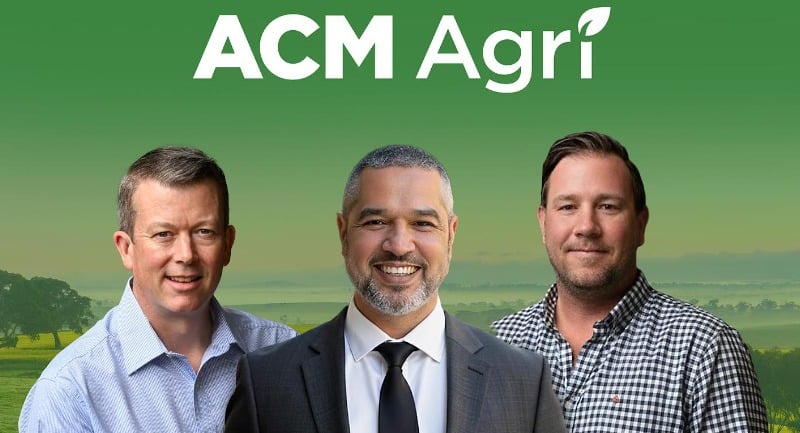
ACM Agri strengthens sales leadership with new hires
ACM Agri has expanded its commercial division with a series of senior appointments and the launch of a new out-of-home platform designed for Australia’s agricultural sector.
The agricultural media network, which publishes The Land, Queensland Country Life, Stock Journal and other long-running titles, has appointed Tom Zavecz, Mark Simpson and Sam Rohayem to new leadership roles within its sales team.
Tom Zavecz joins as National Agency Sales Director, following senior sales roles at Motio, Shopper and Pacific Magazines. He will lead the newly established Agency Sales team, with a focus on strengthening partnerships with major media agencies. “We are dedicated to advancing the ag industry by creating innovative products that help brands foster deeper, more meaningful engagement,” Zavecz said.
Mark Simpson has been named Agricultural Commercial Manager – Queensland, bringing more than 15 years of experience with News Corp Australia. He will oversee the state’s sales operations, targeting major industries such as beef and horticulture. “Our newly formed Queensland division is already making huge inroads with customers,” Simpson said.
Sam Rohayem has been appointed National Real Estate Sales Manager, after two decades in property advertising with News Corp, REIV and Fairfax. His remit will cover the growing farm property market, which has seen average prices rise 256 per cent over the past 20 years. “Our first-party property data, combined with our editorial team who truly live and breathe ag, makes us unstoppable,” Rohayem said.
Alongside the new hires, ACM Agri has introduced *Out Of Paddock*, an out-of-home (OOH) platform that delivers digital advertising screens at key agricultural field days. The initiative aims to provide brands with high-impact messaging opportunities in rural communities.
Scott McCullough, ACM Agri General Manager – Commercial, said the expansion reflected the company’s commitment to innovation. “We’re more than a media company – we’re a trusted connector at the heart of Australian agriculture. I’m excited to welcome this group of established leaders to the ACM Agri team. Their deep expertise will allow us to forge even stronger partnerships with our clients.” McCullough said.
ACM Agri reports it reaches 85 per cent of Australia’s farm decision-makers each month across print, digital, social and events, according to QARS Heartbeat of Australia research (May 2025, n=3,558).
Top image: Mark Simpson, Sam Rohayem & Tom Zavecz
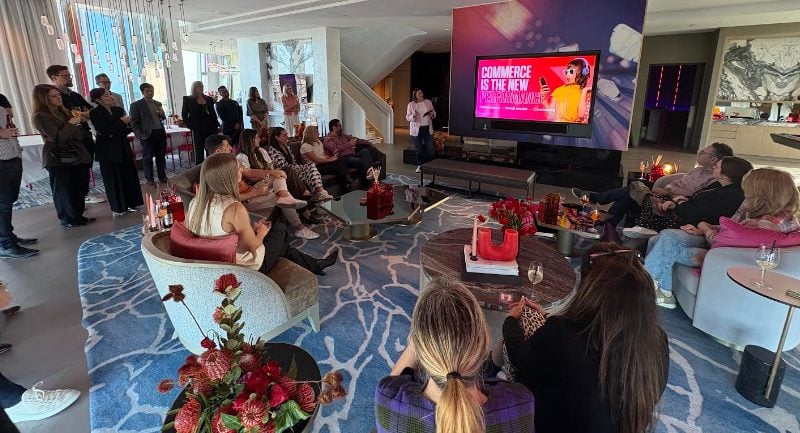
MiQ unveils Sigma platform at Sydney’s MiQ House
MiQ has launched its inaugural MiQ House event in Sydney, using the three-day gathering to unveil its new programmatic technology platform, Sigma, and set out priorities for 2026.
Held on the 88th floor of Crown Towers’ Presidential villa, MiQ House welcomed more than 100 guests from agencies and brands. The event combined client sessions with demonstrations of Sigma, which the company describes as the first technology able to unify the programmatic ecosystem.
Sigma brings together more than 300 data feeds and 700 trillion consumer signals to provide insights into viewing, browsing and purchasing behaviour. Powered by AI, the platform supports planning, audience curation and activation across digital environments.
Future priorities and partnerships
MiQ used the event to outline its 2026 pillars, including the expansion of its “TV is everywhere” message through investment in total TV planning across BVOD, SVOD, YouTube and social video. The company also plans to grow its commerce offering through new data partnerships and maintain its “people powered, tech enabled” positioning.
Two recent partnerships were highlighted: with OzTAM, integrating VOZ currency data into MiQ’s cross-platform tool TVi, housed within Sigma, and with Lifesight, enabling advanced location intelligence and measurement. Additional partnerships are expected to follow.
Industry response
Marcelle Hoyek, National Managing Director, iProspect, said: “We saw some incredible technology at MiQ House. The breadth of capability it provides for our clients is way beyond what we expected. It’s super impressive for our clients and our business moving forward.”
Simon Rutherford, CEO, Slingshot, added: “MiQ has been in AI for 15 years and their experience is showing through in terms of how they’ve utilised the range of data that’s available to them. I’m excited about the range of different options and the ability to create a bespoke Sigma platform tailored to how partners and their clients need to view it.”
Showcasing Sigma in Sydney
Across six sessions held over three days, attendees were hosted against the backdrop of Sydney Harbour and dined with menus from Oncore, Nobu, Woodcut and a’Mare.
Chris Freel, MiQ Chief Revenue Officer ANZ, said: “It was fantastic to bring our key client and agency partners together at MiQ House to showcase our Sigma technology platform and share our exciting roadmap for 2026. The week was full of great conversation, demonstrations, and discussion around how we can drive great solutions and outcomes through the Sigma platform.”
Media
Allan Gray boss backtracks on remark
The Australian’s Eric Johnston writes that Mackay-Cruise called the remarks “inflammatory” and “inciteful”, stressing there’s no room for violent metaphors in corporate life.
Allan Gray no longer holds a stake in SCA, having sold its 14% share to ARN last year.
Ten faces déjà vu with struggling 10 News+
In 2011 it poured $20m into George Negus’ short-lived 6.30 experiment, which flopped but paved the way for The Project’s long run.
Now in 2025, with The Project gone, Ten has sunk $15m into 10 News+ – and three months in, it’s already showing signs of strain.
Netflix faces backlash over Dead End
The Daily Telegraph’s Susie O’Brien writes the uproar intensified when Elon Musk vowed to cancel his subscription, triggering a 2.3% share drop and $8.5b wipe in market value.
Legal
Fanatics trademark fight heads to High Court
The Australian’s Angelica Snowden reports that Livingstone, who started The Fanatics in 1997 as a travelling cheer squad, has successfully defended his brand through multiple rounds of litigation.
Companies
Bari Weiss tipped to take CBS News helm
The New York Post’s Alexandra Steigrad writes the move would hand the contrarian journalist rare influence inside the storied but struggling network.
Social media
Wikipedia caught in teen social media ban confusion
Crikey’s Cam Wilson reports the group has asked for confirmation it is exempt, but no assurances have been given.
AI
Tech Council weighs copyright reform in AI push
Capital Brief’s John Buckley and Daniel Van Boom write that the lobby group, which counts Atlassian, Canva, Microsoft and OpenAI among its members, was absent from this week’s Senate hearing where creative groups slammed proposed text and data mining exemptions.

